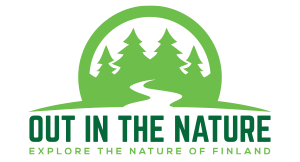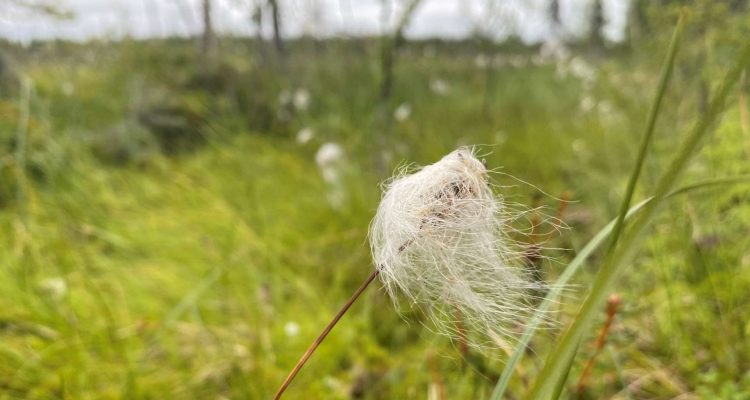Eco-friendly nature travel is quite embedded in the Finnish DNA. Most Finns want, like our ancestors, the immeasurable value of clean nature to be enjoyed by the generations to come. But what does it mean to experience nature in an eco-friendly way? Are there ways to make nature travel in Finland more eco-friendly?
We talked about eco-friendly nature travel with our bloggers, and everyone had a lot to say about this topic. Nature travel bloggers who have been blogging on our site all feel that more education is needed, especially now when nature travel is booming. Some people don’t respect nature and even the simplest rules such as not throwing any trash to nature seem to be lost.
We put together a list of things that you should consider when travelling in nature in Finland.
1. Consume less when preparing for your travels
Eco-friendly nature travel begins before the trip. Buying or renting second-hand travel gear is an excellent way to consume less. Pre-used clothes and travel gear can be found from multiple Facebook groups and different online marketplaces. Check out for example these marketplaces:
- Retkeily- ja vaellusvarusteita Facebook group
- Retkeily ja Vaellus Kirpputori Facebook group
- Tori.fi ulkoilu ja retkeily
- Huuto.net erä ja retkeily
- Kuinoma rental service
- Partioaitta rental service
- RetkiRent camping equipment rentals
2. Favor public transportation and nearby nature destinations
Public transportation network in Finland is not the most comprehensive one in the world, but it does take you to some nature destinations. Especially in the capital area it might be easier to get to the nature destination by public transport rather than trying to get a parking spot for your car. All cities and towns have some kind of public transportation network, here are some of them:
- Train network within Finland: https://www.vr.fi/
- Long distance buses: https://www.onnibus.com/ and https://www.matkahuolto.fi/
- Helsinki region: HSL
- Turku region: Föli
- Tampere region: Nysse
- Jyväskylä region: Linkki
- Oulu region: Oulun joukkoliikenne
We always try to advise you how to reach nature destinations by public transport for environmental reasons. In fact, one of the main reasons why we established this website was to provide information about sustainable nature travel in Finland and how to find less-travelled nature destinations. If you know some nature destinations are crowded, you could consider other options. It is great that nature travel is trending, but not at the expense of nature. Especially arctic nature is sensitive, and its ecological capacity for nature tourism is limited.
3. Leave no trace
Leave no trace -principle is commonly used in Finland, and it is easy to remember. We also say that whatever you can carry to the forest, you must be able to carry out of there. Avoiding littering is the easiest part of this rule (although not so easy for everyone!), but this can also mean many other things.
How to shit in the woods is a famous book worth reading in case you are wondering what the eco-friendliest way of taking care of your business out in the nature is. Many nature trails that have camp sites in Finland also have outhouses, but sometimes you must go to the forest, and the aim is still to leave no trace. Toilet paper is biodegradable and can be buried on the ground, but moisturizing towels might include chemicals and should be carried away from nature as trash.
Leaving no trace means not touching living trees. Sad sight near lean-to shelters is sometimes cut tree branches or bark missing from the growing trees. If the lean-to shelter is not equipped with free firewood and you forgot to bring some, do not make any fire with bark or branches from living trees. It’s as simple as that.
Leaving food in lean-to shelters attracts rats and other creatures, which is not very nice for those who would like to use the shelter for sleeping. With so many beautiful lean-to shelters available for us all free of charge, the least we can do is to keep them tidy and unharmed.
One question that rose in our bloggers’ discussion about this topic was whom you should contact if you see too much trash for you to clean up at some nature destination, broken duckboards, fallen signs or anything, that should be fixed that you cannot tidy yourself. It depends on the nature destination who is maintaining it. Metsähallitus maintains national parks, but often municipalities or some organizations are responsible for the nature destination. We would say that the municipality of the nature destination is a good place to contact.
We humans can also leave a visible trace to nature just by walking or cycling. Erosion is a growing problem in popular nature destinations. If there are marked trails or duckboards available, they should be used instead of any shortcuts.
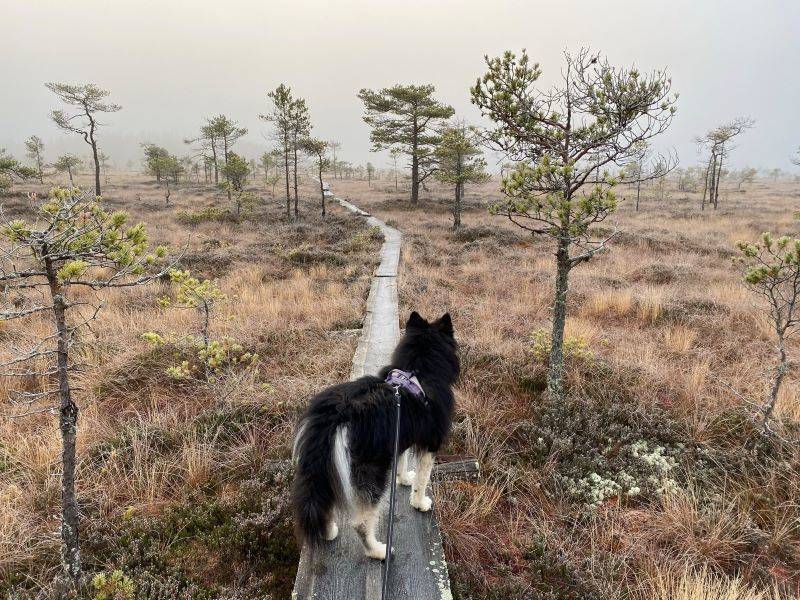
4. Respect flora and fauna
Everyman’s rights give us all plenty of freedom to roam in Finnish forests, pick berries and forage mushrooms. As mentioned earlier, collecting branches or anything else from living trees is not part of otherwise generous everyman’s rights. Cutting down trees is naturally prohibited. Same goes for collecting moss and lichen, it is not allowed to collect them. Rocks cannot be collected in vast quantities or in such a way that they leave visible traces on the ground. Digging the ground is also prohibited, this is useful information for those who are into metal detecting.
Respecting animals is equally important. What do you do if you encounter a reindeer in nature? Admire it and take pictures. You do not go and pet the reindeer. You should also be considerate with noise when wandering in nature. For example, nesting birds should not be disturbed.
As a dog owner I’m most annoyed by those dog owners who do not respect the law of keeping your dog on a leash. This is not a recommendation, nor is it something invented to annoy you. According to the Hunting Act, dogs should be kept on the leash from the beginning of March to the end of August. Yes, this means the whole summer. Dogs can only run freely with the landowner’s permission or in areas dedicated to dogs such as dog parks, or in your own yard. Not in national parks, forests, nor nature trails. This is to guarantee the safety of wild animals, who might have babies, or who might be weak after winter. In Lapland, reindeer are expecting babies in spring and reindeer herders do not welcome dogs chasing after the reindeer and causing them stress especially during that time.
- Hiking with a dog – on the terms of a dog
- Beginner’s quick guide to metal detecting in Finland
- Reindeer herders gathering in Vasakaira, Sodankylä
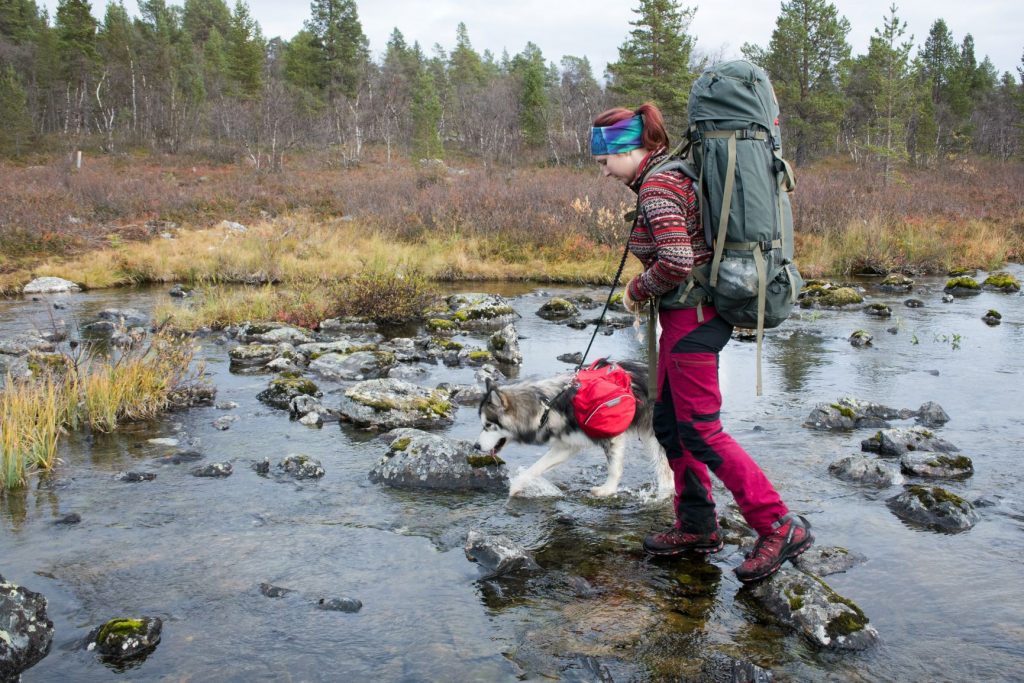
5. Use resources in nature sparingly
It is wonderful that most lean-to shelters in Finland have firewood available free to use. But that doesn’t mean that you should keep the fire going all night long. Firewood should be used sparingly at publicly available lean-to shelters around the country. Sometimes firewood is stored by the lean-to shelters as big logs, so that people would have to cut them smaller and therefore use less of it. It is also a widespread practice to keep a little stock of ready-cut firewood available in barbecue huts or lean-to shelters in case some tired hiker arrives there and needs it urgently.
Part of using resources sparingly is sustainable fishing and hunting. Paying a fisheries management fee is easy and it gives 18–64-year-olds permission to fish with lures or traps or crayfishing. There are also water area specific permissions that can be required on top of the fisheries management fee, especially in rivers. These fees are not collected for profit, they are used for managing fish habitats and fishing areas. If you are into fishing, you should also find out the minimum catch sizes and protection periods. These are relevant for species such as sea trout, landlocked salmon, brown trout, grayling, and Saimaa char. For more information about fishing or to obtain fishing permits, visit Eräluvat website.
Hunting is regulated in Finland by the Hunting Act and the Hunting Decree to maintain healthy quotas of animals and decreasing the number of car accidents. The Finnish Wildlife Agency promotes sustainable game husbandry and sees to the implementation of wildlife and game policy in Finland. To read more about hunting or fishing, check out our earlier posts:
- All you need to know about moose hunting in Finland
- All you need to know about deer hunting in Finland
- Ice-fishing in Finland
- Fishing from the bridge
- Catching grayling in Lapland
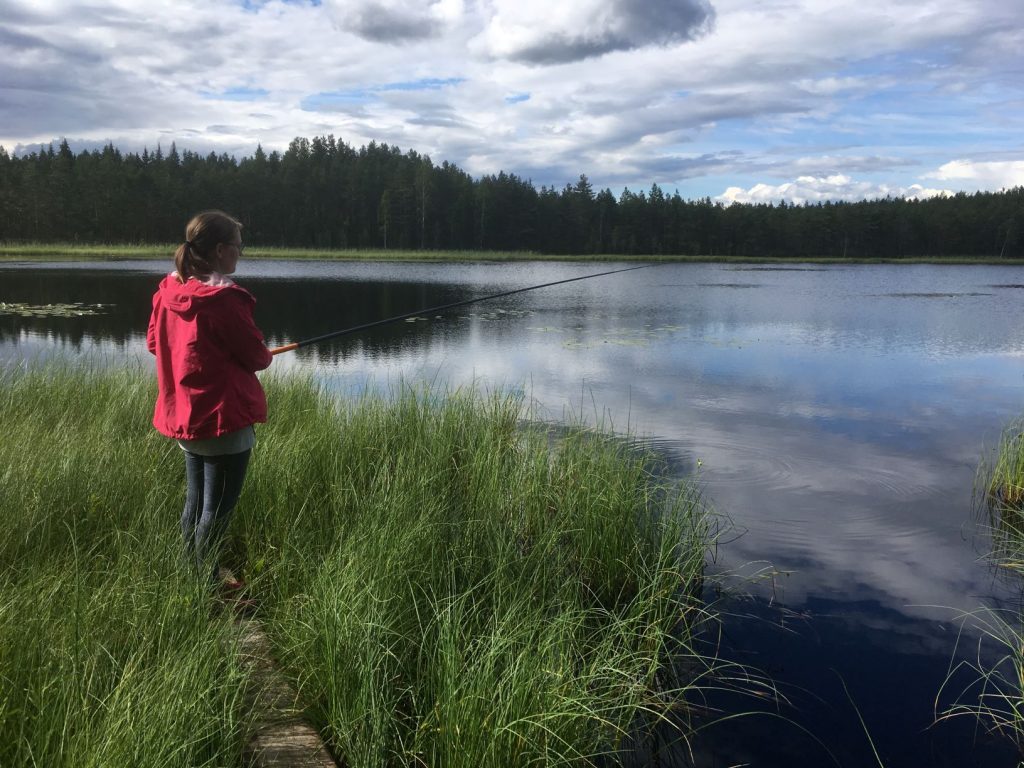
6. Choose local ingredients for your meals
Finland is known for amazing organic ingredients such as berries, herbs, mushrooms, fish, and game. The everyman’s rights allow you to forage berries and mushrooms as much as you can from the Finnish forests. You may have noticed that we truly embrace this and love all the food that Finnish nature provides:
- Blueberries are the superfood of Finland
- Cloudberries are the real gold of Lapland
- Cranberries are the world’s healthiest food
- Food from the nature – luscious lingonberries
- Food from the nature – yummy wild raspberries
- Mushroom picking in Finland is fun
- How to identify edible boletes in Finland
- How to tell chanterelle and false chanterelle apart
- What is the difference between true morels and false morels?
- Foraging for the most common mushrooms in Finland
- Out in the Nature Quiz – How well do you know Finnish mushrooms?
- Out in the Nature Quiz – Another fun mushroom quiz
- Foraging wild herbs in Finland
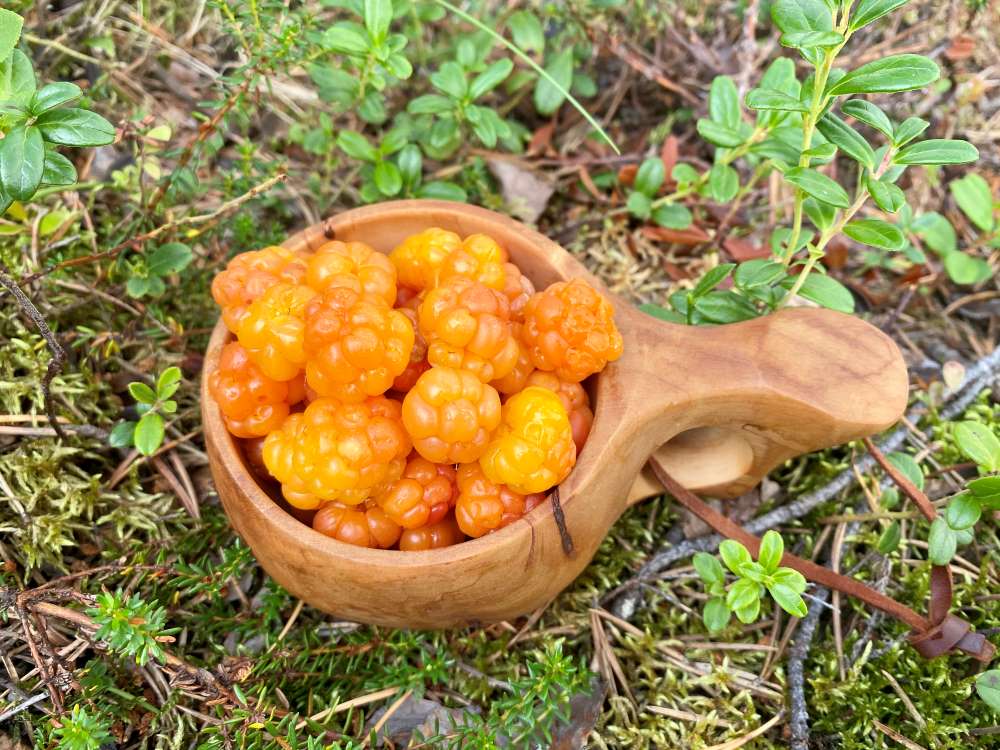
We have been planning to write a post about drying your own food for hikes. Would this be an interesting topic that you would like to learn more about?
7. Carry your own kuksa and avoid all plastic
Finnish kuksa is an excellent souvenir idea and a great option for a travel mug. Kuksa is a wooden cup made of birch burl, based on the ancient tradition of the indigenous Sámi people of Lapland. If you purchase kuksa in Finland, make sure it is not made of plastic as some imported copies have recently appeared in the market. Original kuksa is not cheap, but if you invest in one, it will be your lifelong friend.
We also highly recommend you to stop using all plastic and especially forks, knives and spoons. Use wooden utensils, or carry your own portable silverware with you. Little actions like this contribute to the environment when a group of people does that.
Unfortunately, we have seen that many people buy single-use barbeque in aluminium package and leave those in nature after use. That’s the worst kind of trash for single-use and leaving behind, especially in a country full of lean-to shelters and fireplaces. We would also like to remind you that forest fire warning limits the usage of them in the same way as any open fire.
8. Use tap water or drink directly from natural spring
In Finland, tap water is drinkable and high-quality all around the country, so don’t bother buying plastic water bottles from a grocery store for your hikes. Did you know that it takes about 1000 years for a plastic bottle to decompose? If your great great great great great great great great great great great great great great grandparent had had a plastic bottle, it would still be here. We are lucky our ancestors didn’t have plastic, but think about the legacy current generations are leaving behind.
Many nature destinations in Finland have natural springs or wells where you can fill your re-usable water bottles. When clean water is not available, boiling the water or using water filters are good options for longer hikes.
9. Don’t forget biodegradable washing liquids
Biodegradable shampoo, conditioner, sunscreen, toothpaste, insect repellent, and dish soap should be used when camping and backpacking. It is recommended to use biodegradable washing liquids always on dry land instead of directly in the water, so that they absorb to the ground first. It’s also worth noticing that natural is not synonym to biodegradable, so check the labels carefully. Stores like Lush don’t sell anything biodegradable in Finland, unfortunately. Here are few brands that have biodegradable products that you can find in Finland (not sponsored):
10. Recycle your waste upon return to civilization
After your nature travels, you can find a recycling station in every town. In Finland, waste can be sorted into energy waste, glass, metal, paper, carboard, plastic, and bottles for which there is a deposit refund system in grocery stores. It’s also a clever idea to carry an extra bag with you so that you can collect any waste that you encounter when hiking.
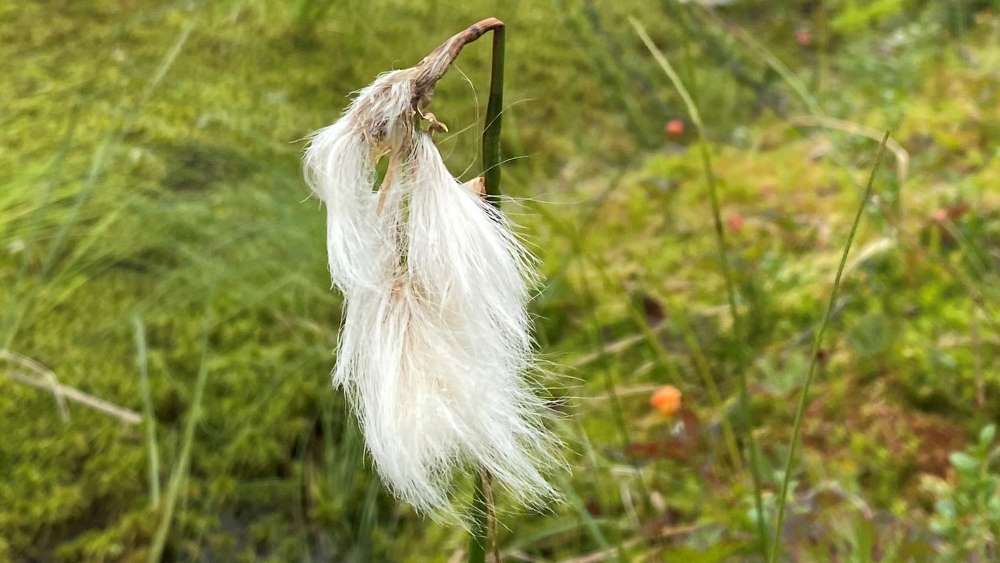
What do you think about our tips for eco-friendly nature travel? Are they all familiar to you already or was there something new? What would you add to our list? Comment below!
